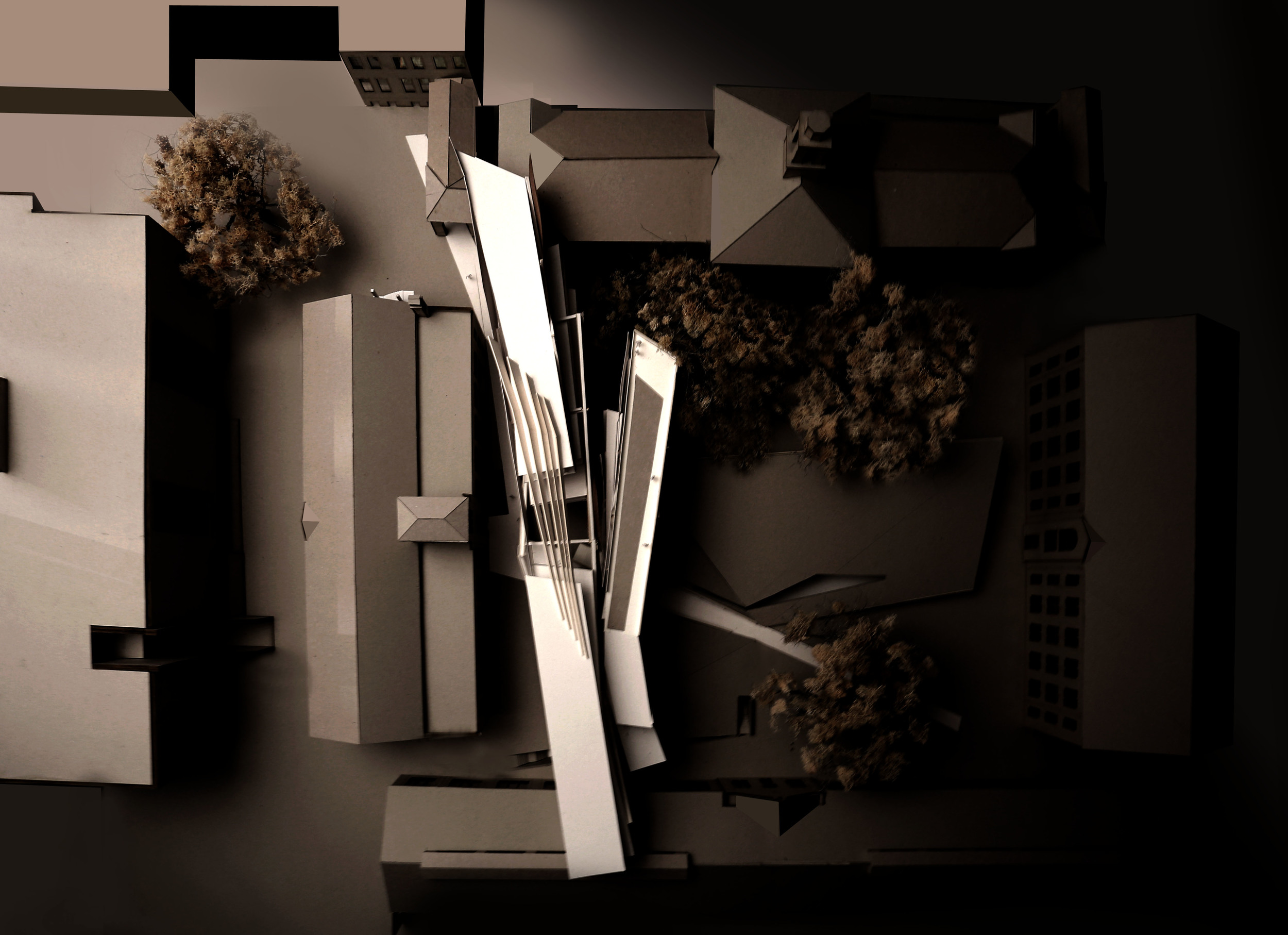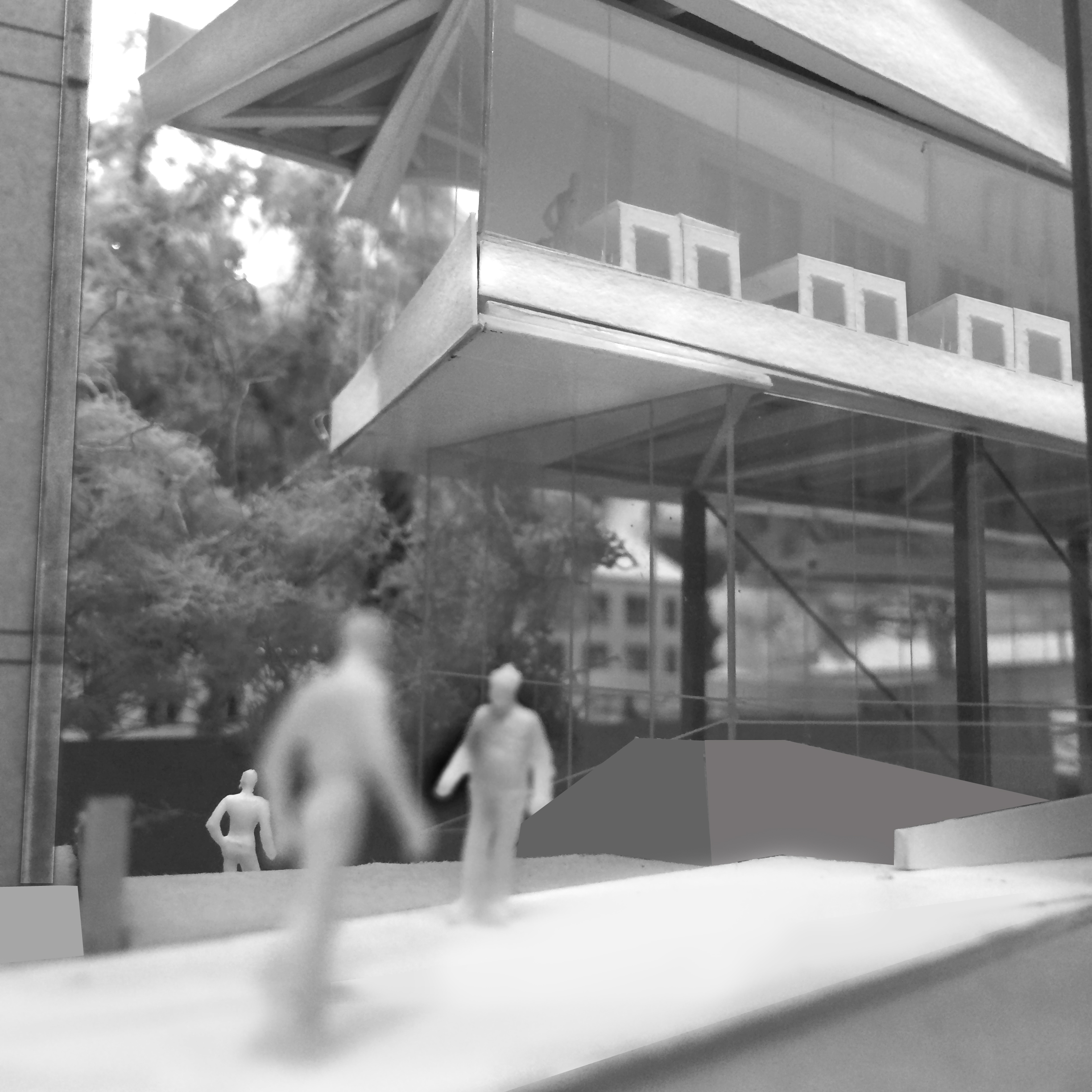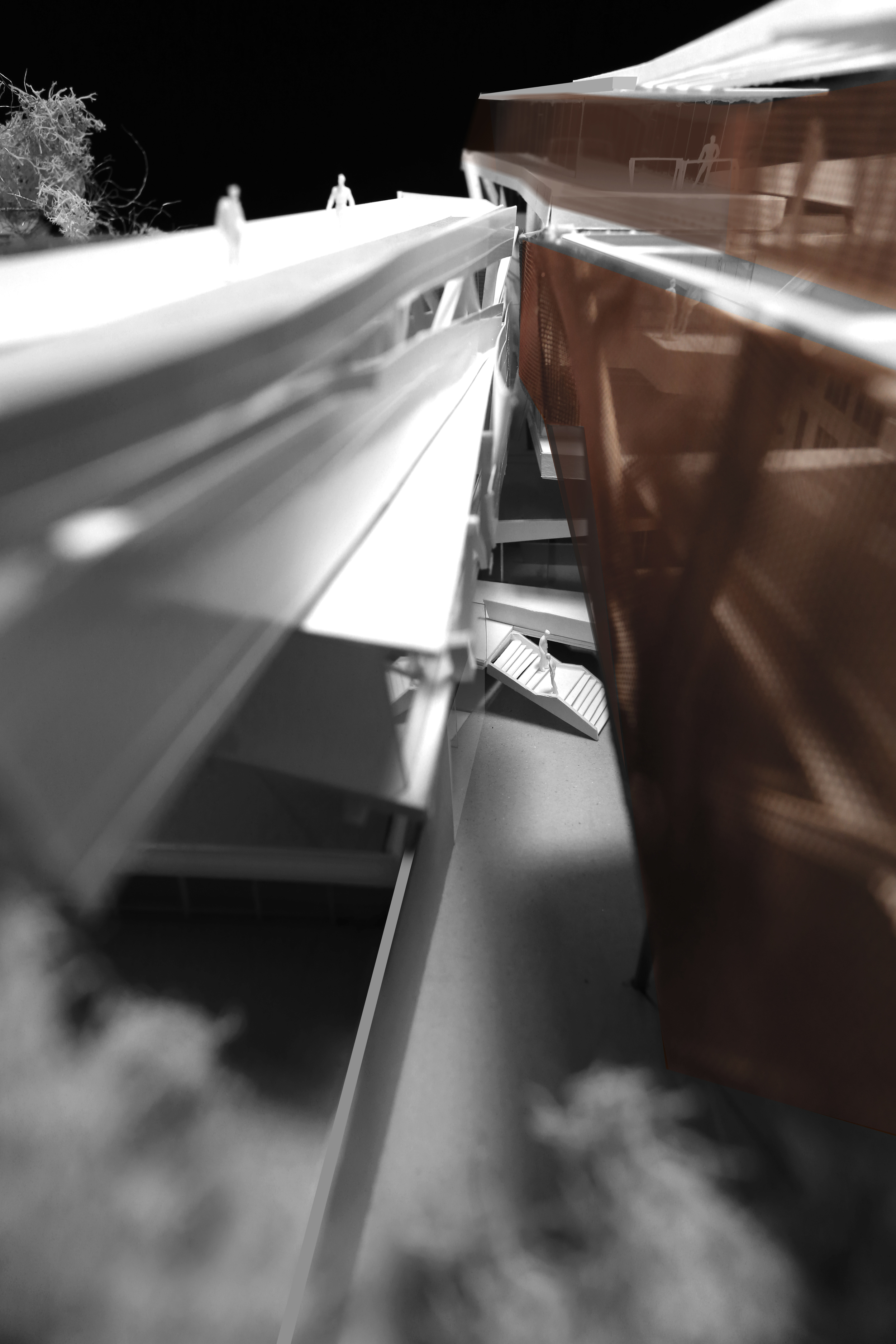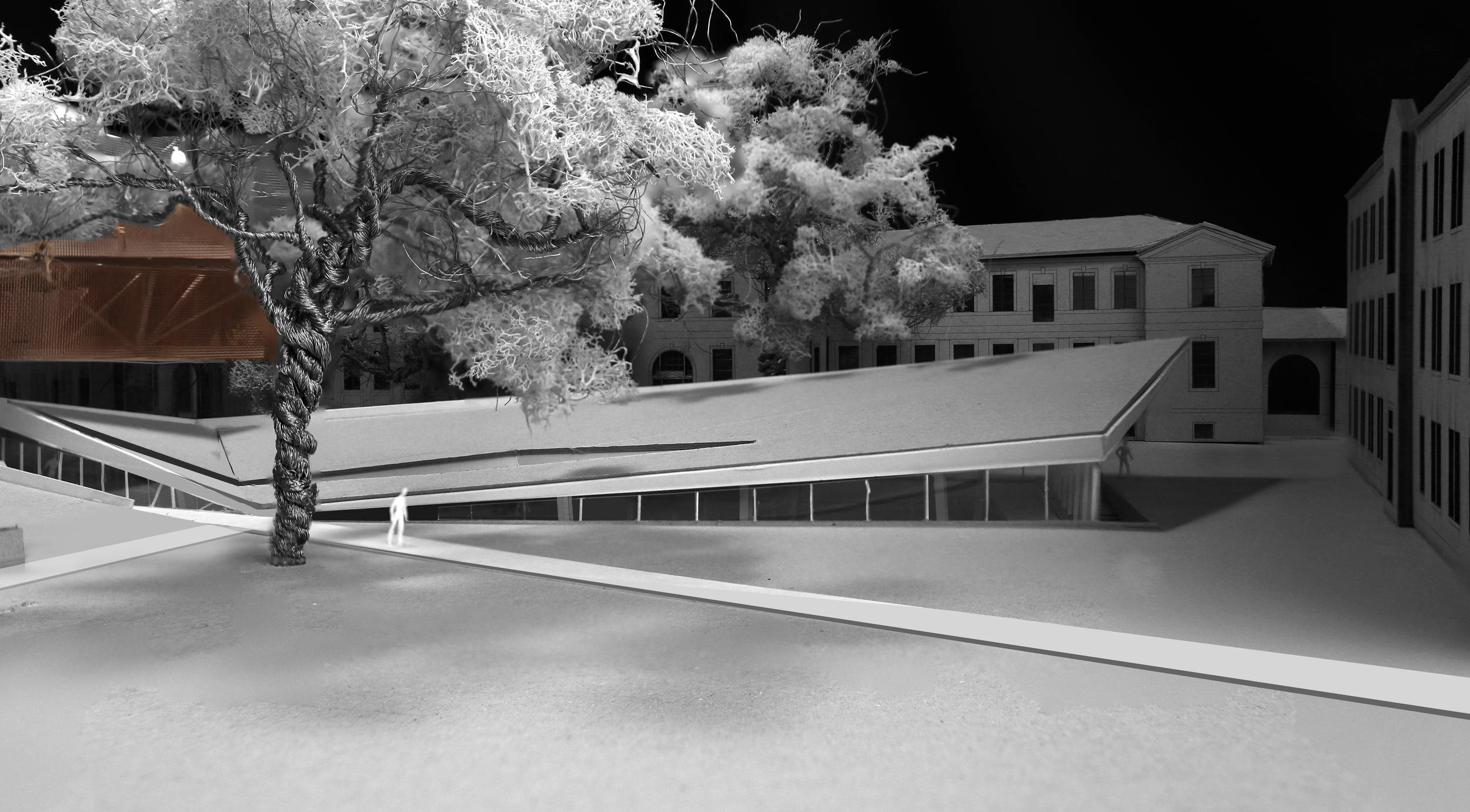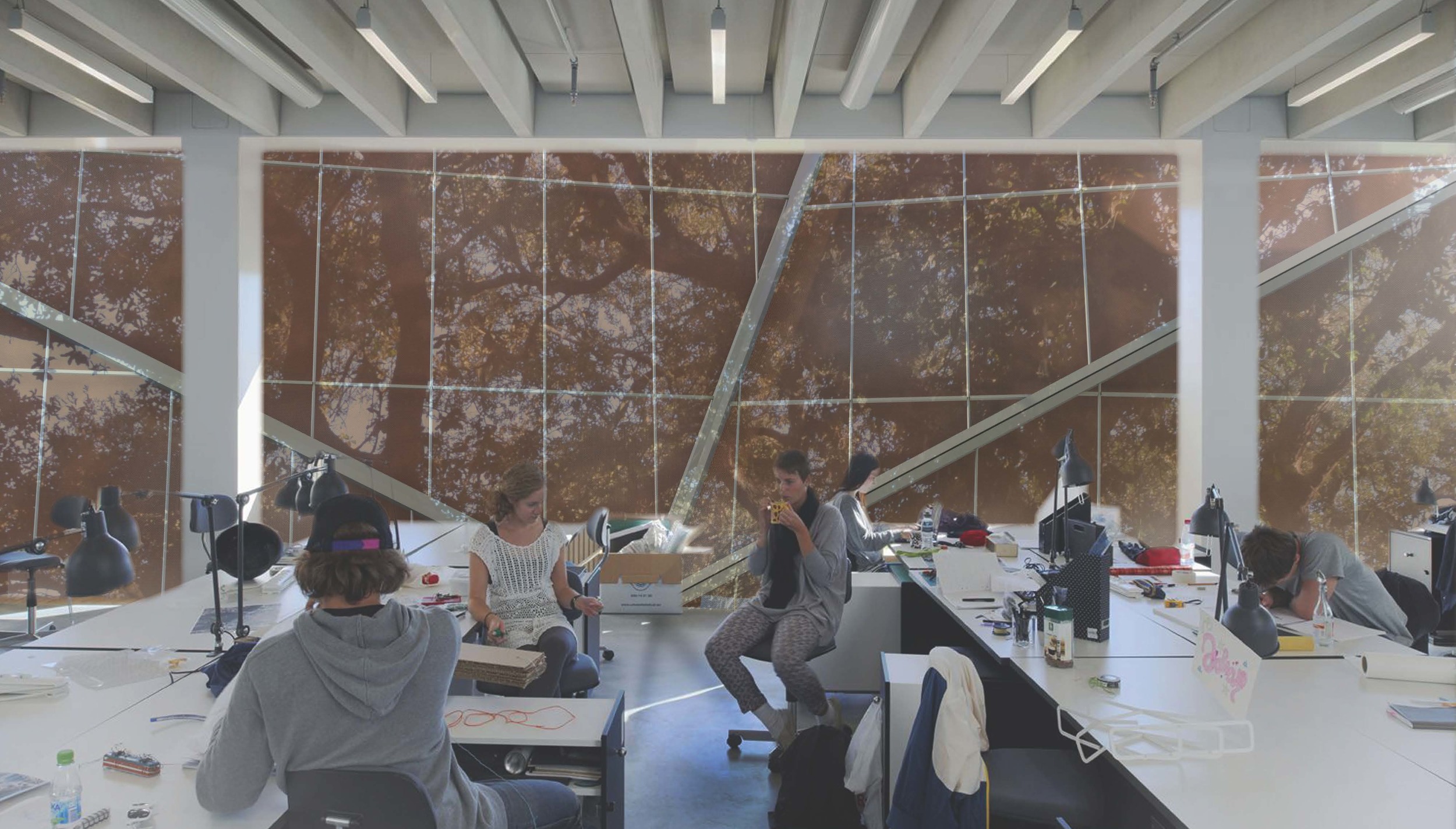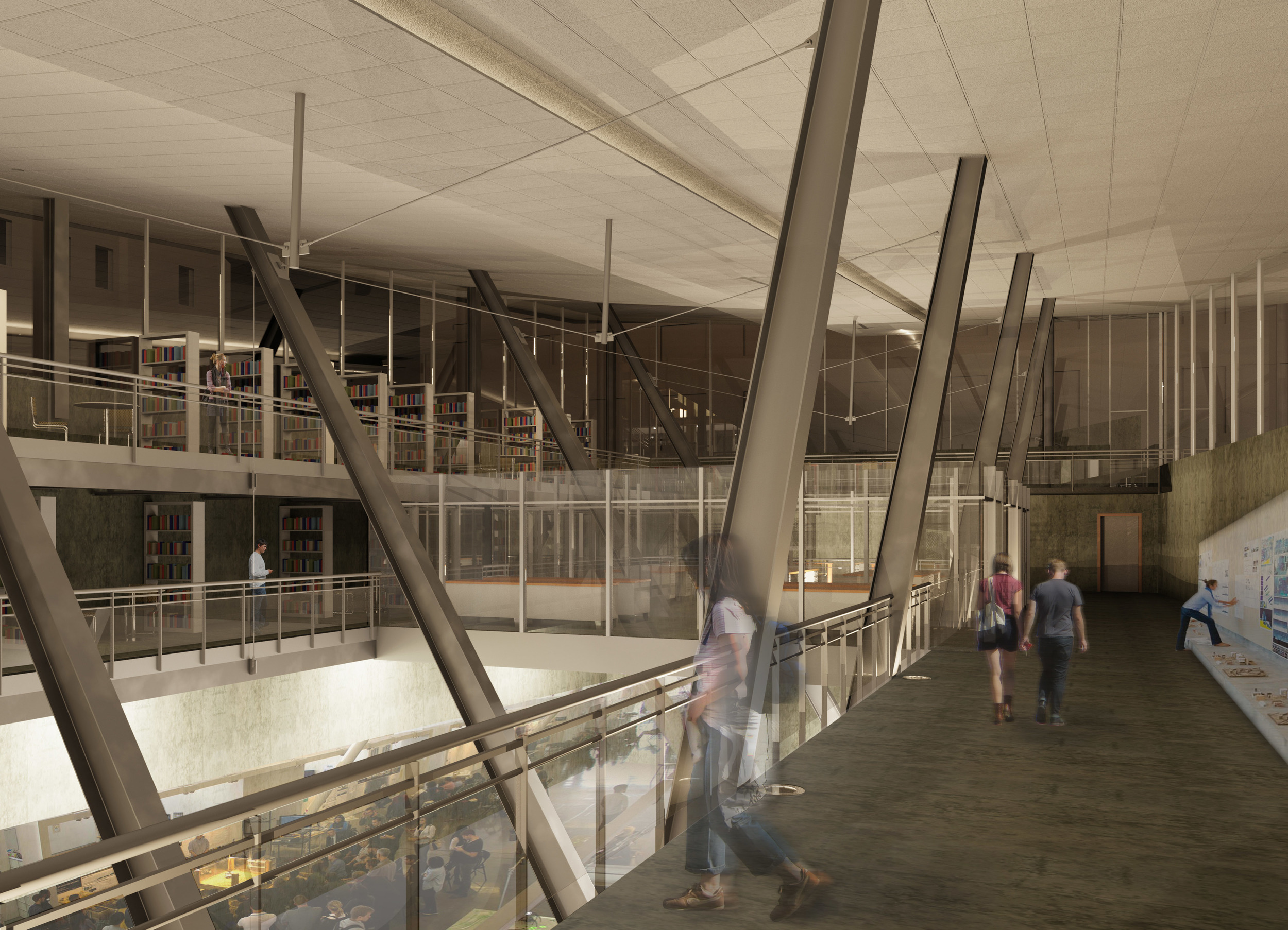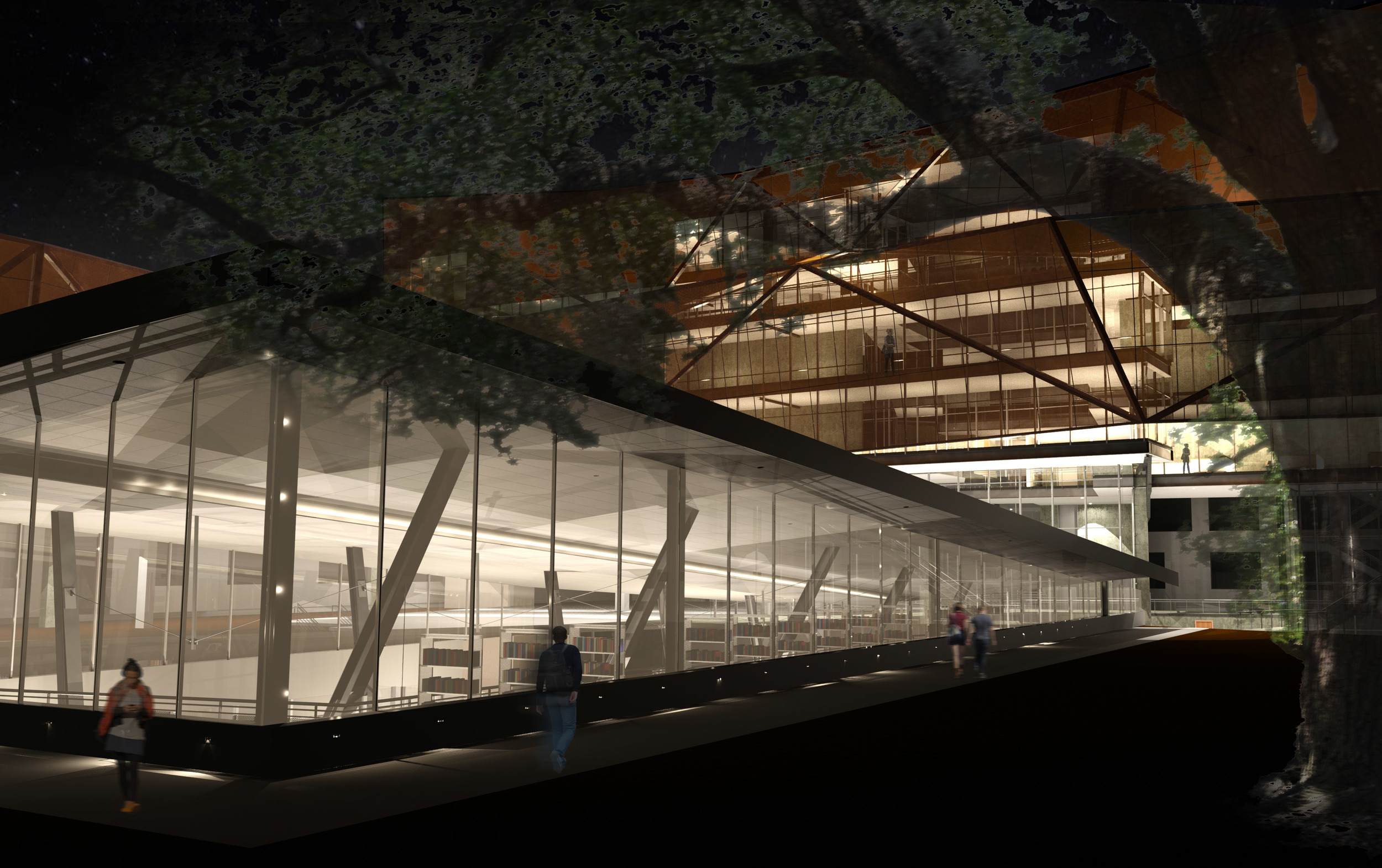
DESIGN BUILDING
Our directive of the college was to create a new Art & Design building on our school’s campus. This building was to be used by all design majors. The question we asked was: how have we been limited in our design education by the physical environment?
Our hypothesis, therefore, is a response to the formal qualities of existing structures and their arrangement within the campus structure. The existing Design Atrium offered a case study in which each discipline, relegated to their respective floors, is connected through a common vertical space. However, this does not allow for any communal gathering or interaction. As a program strategy, creating visual transparency across the vertical space on varying levels forces the dialogue between the disciplines.
Our model and sketch studies should therefore be explorations into understanding what translates as the architectural equivalent to the connective tissue to form the reimagined vertical quad. Questioning how one moves between buildings and for what purpose allows us to filter our programmatic needs between the various levels. The solution responds equally to the internal needs of the college--the vertical quad--as well as the campus structure through connecting the space of the Quad through the site creating the base of the vertical space of the College of Art & Design.
The program is broken down into 2 components: a vertical stack of traditional studio space and a 25,000SF below grade warehouse for foundation studio as well as mix use purposes such as design build, prototyping, and large installation work. This flexibility allows the college to transition from varying design pedagogies concerning the foundation studio. The stack of traditional studio space also allows for this flexibility. The treatment of each space is similar--light is allowed from both east and west, diffused through the perforated copper screen and vertical fins--creating a uniform natural lighting.
Our design solution forms a connective tissue through the arrangement of program and responds to circulation patterns on varying scales.

